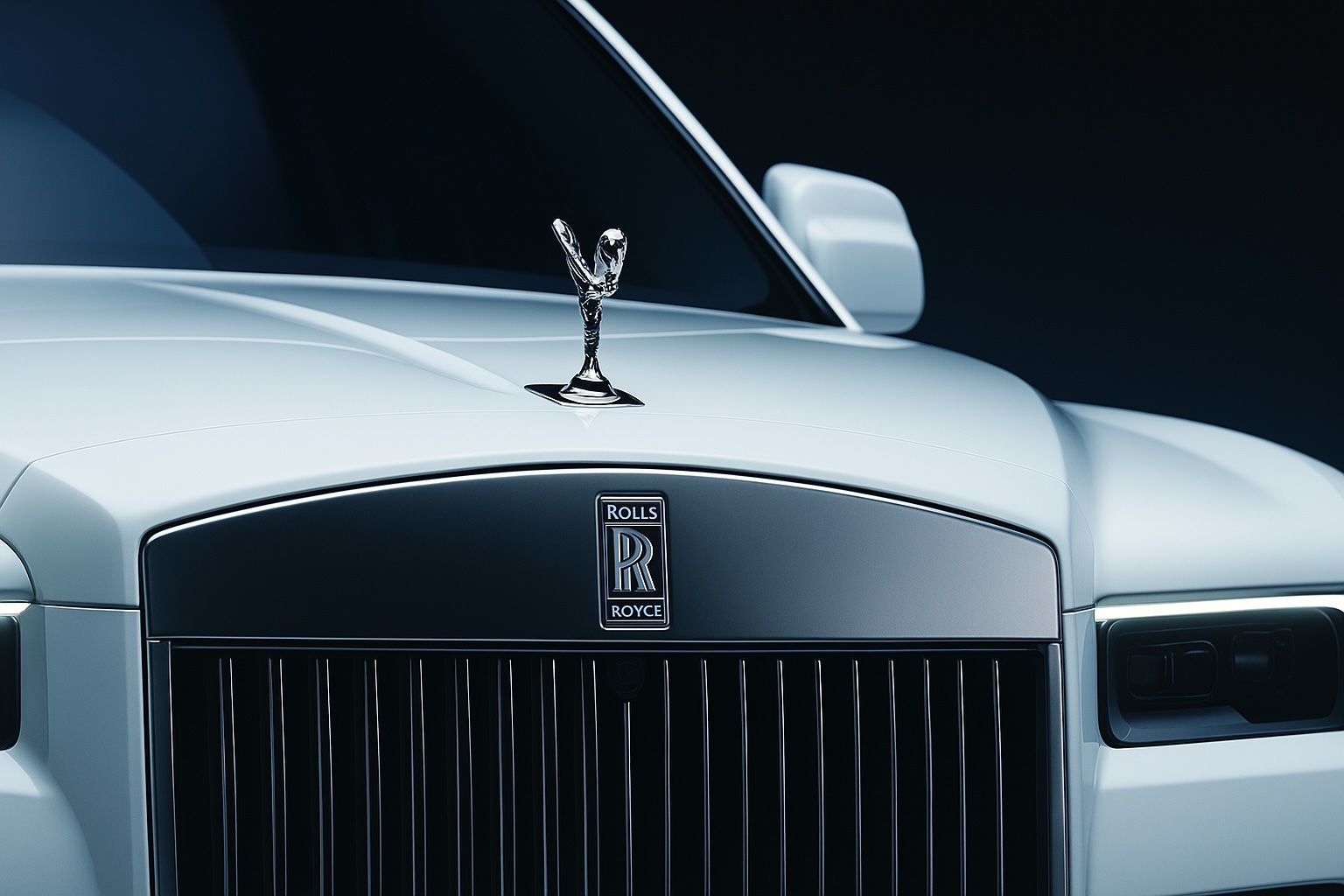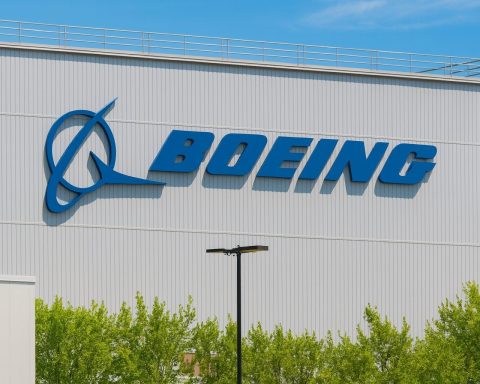- Ticker/Sector: RR.L (LSE; Aerospace & Defense) [1]. Headquarters in London; CEO Tufan Erginbilgic (since 2023).
- Stock Price: ~1,176p mid‐day Oct 3, 2025 [2] (up ~0.8% on the day). 52-week range 517–1,196p [3]. YTD rise ~100% (≈+124% over last 12 months [4]). Market cap ~£99.1bn (≈$130bn) [5].
- Valuation Metrics: Trailing P/E ~17× (TTM) [6], forward P/E ~43× [7]. Price/Book ~41× (inflated by intangibles) [8], and Price/Sales ~5.1× [9]. Dividend yield ~0.6% (interim 4.5p announced for 2025) [10] [11].
- Financials (FY2024): Revenue £18.9bn (up ~15%) [12]; underlying operating profit ~£2.5bn (55% higher YoY) [13]; free cash ~£2.4bn [14]; net cash £475m. Shareholders’ payout resumed: 6p interim dividend + £1bn buyback announced (June 2025) [15]. Management aims for underlying profit £3.6–3.9bn by 2028 [16].
- Outlook & Ratings: Analysts are generally bullish. UBS and others recently raised price targets (e.g. UBS lifted its target in late September [17]). Quiver notes a recent “buzz” around upgrades for RR [18]; HC Wainwright initiated a Buy on Sep 19, 2025 [19]. Some houses see value around £6–7/share (6p=£6.00) [20]. Consensus “2.11” on a 1–5 scale indicates a moderate Buy/Hold [21].
Current Stock Performance (Oct 2025)
Rolls-Royce shares are at multi‑year highs after a remarkable rally. On Oct 3, 2025 the stock was around 1,176.5p [22], near its all-time peak (1,196p) [23]. This compares with only ~520p a year ago – a +124% gain [24]. The 2‑year surge is roughly +400%, reflecting a turnaround since mid‑2023 [25]. The stock trades at a market‑leading valuation (P/E ~17×) that still trails U.S. peers (e.g. GE’s ~21×), reflecting rapid earnings growth [26] [27]. YTD, RR.L has handily outperformed the FTSE 100 (the broader index hit record highs at quarter‑end [28]) and sector indexes. Trading volume is elevated, and several analysts have recently raised targets – UBS notably lifted RR’s price target on Sept 30 [29], helping Rolls-Royce jump ~+2% that day (top FTSE contributor). Overall market sentiment is positive: the stock has become a top Buy pick for many UK fund managers, buoyed by strong bookings and cost cuts.
Recent News & Strategic Developments
In the last few weeks, Rolls-Royce has continued to rack up wins across its businesses. On Sept 29, 2025, it reported blockbuster orders for Q3 – roughly £8.5bn of new contracts (≈+22% YoY) including civil widebody engine deals and defence programs – a surge that sent shares +8.4% [30] [31]. Management highlighted stronger demand for Trent widebody engines and military systems amid geopolitical tensions. It reiterated full‐year underlying profit guidance (£2.4–2.8bn) and huge free cash flow targets (~£2.1bn) [32]. Shortly after, on Oct 2, the company announced (via press release) new energy‑sector projects – fast‑start gas turbines for data centres and large battery storage deals (e.g. a 40 MW system in Lithuania). These underscore Rolls’s pivot into power generation and sustainability to supplement aerospace revenues. Separately, a UK‑Australian Rolls consortium signed AUKUS-related agreements on Sept 10 (skills/tech deals supporting future submarine/defense projects).
The big recent milestone remains government contracts: in January 2025, the UK awarded Rolls‑Royce a £9.0bn (≈$11bn) “Unity” contract to supply reactors for its new SSBN submarine fleet [33]. In June, Rolls‑Royce SMR won the race to build Britain’s first Small Modular Nuclear Reactors, backed by £2.5bn of government funding [34]. These deals underpin its defense and nuclear backlog. Notably, Rolls has also resumed shareholder payouts (first dividend since Covid) – a 6p interim in Sept 2025 [35] – signaling confidence in cash flow. CEO Tufan Erginbilgic attributes the turnaround to engine durability fixes and cost savings. In July he boosted FY2025 guidance on stronger-than-expected H1 results [36]. All told, the strategic picture is a “phoenix‑like” recovery: widebody aftermarket growth, defence contract wins (including AUKUS sub reactors), and new clean‑tech ventures are all converging.
Financial Results & Outlook
Rolls-Royce’s latest official results (HY1 2025) showed a dramatic improvement: Revenue £9.06bn (up 11% YoY) and underlying operating profit £1.73bn (vs. £1.15bn in H1 2024) [37] [38]. Operating margin jumped to 19.1% (from 14.0%) [39] – led by civil aerospace (25% margin) and recovering power‑gen and defense businesses. Free cash flow hit £1.58bn in H1 (vs. £1.16bn prior year) [40], helping raise net cash to £1.08bn at mid‑year [41]. Management reiterated that FY2025 will exceed guidance, thanks to cost savings and higher flying hours on service contracts. For 2024 full-year, operating profit was £2.5bn (55% ↑) [42] and net cash turned positive. Erginbilgic says Project Phoenix (restructuring/cost cuts) will yield £1bn savings and boost margins toward ~15% by 2027 [43] [44].
Analysts note that Rolls‑Royce achieved 2023 targets a full two years early and is on track to hit £3.6–£3.9bn profits by 2028 [45]. Credit rating agencies have upgraded the outlook. Consensus revenue/earnings estimates have been nudged upward (Zacks reports higher 2025/26 EPS forecasts) [46]. However, some caution remains: supply chain inflation (titanium shortages, tariffs, Boeing engine fixes) could cap near-term margins. The balance sheet is now solid: gross debt ~£3.5bn (some to be repaid from cash in late 2025) against £8.5bn liquidity [47]. The company also continues to deleverage pension deficits. Overall, the financial trend is robust – profits and cash up sharply, while shareholder returns (dividend and buybacks) have re‑commenced due to the “significantly improved performance” [48].
Market Trends & Industry Drivers
Rolls-Royce’s rebound is fueled by several converging trends. In civil aviation, global air travel traffic has rebounded to ~95% of 2019 levels [49], driving airlines to invest in more fuel‑efficient engines. Rolls’ widebody Trent engines (A350, 787) are in high demand for fleet renewal, and order backlogs exceed 2,000 engines [50]. The recovery is not without hiccups (e.g. Boeing’s 787 delays and Trent 1000 fixes), but demand remains solid. The CEO also sees a long-term prize: Rolls is gearing to re-enter the single-aisle market through partnerships, developing a smaller UltraFan demonstrator for next-gen narrow-body jets [51] [52].
On the defense side, Western nations are hiking budgets: NATO allies have pledged >2% GDP (UK to 2.5%), and AUKUS/Tempest programs are catalyzing orders. Rolls already makes jet engines for Typhoon and C-130, and supplies naval reactors. Recent UK policy and MoD deals (submarines, Eurofighter maintenance, Global Combat Air engine programs) have further boosted its pipeline. Industry commentators note that rising “geopolitical tensions” and fleet upgrades will support Rolls’s defense orders [53] [54].
In sustainability/energy, Rolls is leveraging its nuclear and power systems expertise. Winning the SMR contract and partnering with utilities (ČEZ) positions it in small nuclear power – an emerging global market [55] [56]. It is also advancing green aviation: working with airlines on hydrogen engines, and leading EU Clean Aviation R&D projects. Its new mtu gas turbines, batteries and hybrid systems target power-grid flexibility and data center demand (AI growth). These initiatives align with an industry push for decarbonization (SAF fuels and hydrogen by 2050) and diversify Rolls’s portfolio beyond aircraft.
Expert Commentary & Analyst Views
Analysts and industry experts are broadly upbeat. Reuters notes Tufan Erginbilgic’s confident stance: “transformation was delivering” with “substantial growth prospects beyond the mid-term” [57]. After July’s H1 beat, he said engines’ “time on wing” improvements will drive profit, and forecast >80% longer on-wing life for Trent jets by 2027 [58] [59]. Zacks Equity Research (Oct 3, 2025) highlights the demand tailwinds: “Global air travel growth and rising defense spending are driving demand for advanced jet engines, benefiting Rolls-Royce” [60] [61]. Zacks points out a record widebody order backlog (2,000+ engines) [62] and the boost from the new fighter engine joint program.
Brokerages echo this. For example, an Investec analyst recently called the order surge “de-risking FY outlook” and gave a Buy (PT £6.80) [63]. Meanwhile, Oriel Securities noted strong results but cautioned on supply constraints, assigning a Hold with £6.00 target [64]. QuiverQuant reports HC Wainwright’s recent Buy rating (Sep 2025) as evidence of confidence [65]. UBS’s fresh raise of its price target (cited by Reuters) underlines consensus that the recovery has legs [66]. On valuation, analysts observe that Rolls’s forward P/E (~38–43×) is rich by historic standards, so execution and growth are key. Still, surveys show many fund managers remain overweight Rolls-Royce as a turnaround play.
Competitors & Industry Positioning
Rolls-Royce competes globally with GE Aerospace, Pratt & Whitney (RTX), and Safran/CFM (for narrowbodies via LEAP). In widebody jets, Rolls is firmly #2 behind GE, and its Trents power 787, A350, A330, and business jets. In narrowbody, Rolls ceded share to CFM (Airbus A320neo/B737NG) but is working to re-enter that market [67]. On the defense side, it faces RTX (GE/P&W) in military engines; recent wins (e.g. C-130J engines, Eurofighter) attest to competitive strength. For nuclear power, Rolls-Royce SMR has a home‑field advantage in the UK but will compete with GE-Hitachi, Westinghouse, etc., abroad [68].
Industry trends favor all engine makers right now: high passenger traffic is fueling engine upgrades across OEMs. Safran (with GE) is bullish on Boeing’s ramp-up of the 737 MAX [69]; Rolls will benefit indirectly when Boeing’s troubles (787 delays, 737 MAX pause) resolve. The UK’s fiscal and regulatory tailwinds (MoD programs, Jet Zero strategy) specifically benefit Rolls. However, they also benefit peers: e.g., Safran reported record deliveries in 2025 and raised its outlook [70], and RTX’s F-35 contracts are boosting profits. In this competitive context, Rolls’s key edge is its integrated propulsion portfolio (air, sea, power), its strategic partnerships (Airbus, BAE), and the momentum of Erginbilgic’s efficiency drive.
Outlook: The consensus is cautiously optimistic. If global travel and defense spending remain strong, Rolls-Royce should continue converting large order backlog into profits. Analysts expect 2025 underlying operating profit nearer to the top of guidance (~£3.0bn) and a growing dividend stream. Risks include supply-chain snags (geopolitical tariffs, labor issues) and potential airline demand shocks (e.g. economic slowdown). But experts note that even a pullback in discretionary flying would likely only shave a few percent off profits [71] [72]. For now, the narrative is one of a rejuvenated British industrial champion: “soaring stock,” says the Guardian, thanks to sustained engine demand and rigourous cost control [73].
Sources: Financial news and data from Reuters (price and key metrics [74] [75]), Yahoo/Market Analysis (Zacks/Nasdaq report [76] [77]), the company’s H1 2025 report [78] [79], and reputable financial news outlets (The Guardian [80] [81], Reuters [82] [83], ABC Money [84] [85], etc.). These sources underpin the above synthesis of Rolls-Royce’s current financial and strategic situation.
References
1. www.reuters.com, 2. www.reuters.com, 3. www.reuters.com, 4. www.nasdaq.com, 5. www.reuters.com, 6. www.reuters.com, 7. www.reuters.com, 8. www.reuters.com, 9. www.reuters.com, 10. www.reuters.com, 11. www.theguardian.com, 12. www.theguardian.com, 13. www.theguardian.com, 14. www.theguardian.com, 15. www.theguardian.com, 16. www.theguardian.com, 17. www.reuters.com, 18. www.quiverquant.com, 19. www.quiverquant.com, 20. www.abcmoney.co.uk, 21. www.reuters.com, 22. www.reuters.com, 23. www.reuters.com, 24. www.nasdaq.com, 25. www.reuters.com, 26. www.reuters.com, 27. www.nasdaq.com, 28. www.reuters.com, 29. www.reuters.com, 30. www.abcmoney.co.uk, 31. www.abcmoney.co.uk, 32. www.abcmoney.co.uk, 33. www.reuters.com, 34. www.reuters.com, 35. www.theguardian.com, 36. www.reuters.com, 37. www.rolls-royce.com, 38. www.reuters.com, 39. www.rolls-royce.com, 40. www.rolls-royce.com, 41. www.rolls-royce.com, 42. www.theguardian.com, 43. www.reuters.com, 44. www.abcmoney.co.uk, 45. www.theguardian.com, 46. www.nasdaq.com, 47. www.rolls-royce.com, 48. www.theguardian.com, 49. www.abcmoney.co.uk, 50. www.nasdaq.com, 51. www.reuters.com, 52. www.reuters.com, 53. www.nasdaq.com, 54. www.theguardian.com, 55. www.reuters.com, 56. www.rolls-royce.com, 57. www.reuters.com, 58. www.reuters.com, 59. www.reuters.com, 60. www.nasdaq.com, 61. www.nasdaq.com, 62. www.nasdaq.com, 63. www.abcmoney.co.uk, 64. www.abcmoney.co.uk, 65. www.quiverquant.com, 66. www.reuters.com, 67. www.reuters.com, 68. www.reuters.com, 69. www.reuters.com, 70. www.reuters.com, 71. www.theguardian.com, 72. www.abcmoney.co.uk, 73. www.theguardian.com, 74. www.reuters.com, 75. www.reuters.com, 76. www.nasdaq.com, 77. www.nasdaq.com, 78. www.rolls-royce.com, 79. www.rolls-royce.com, 80. www.theguardian.com, 81. www.theguardian.com, 82. www.reuters.com, 83. www.reuters.com, 84. www.abcmoney.co.uk, 85. www.abcmoney.co.uk










